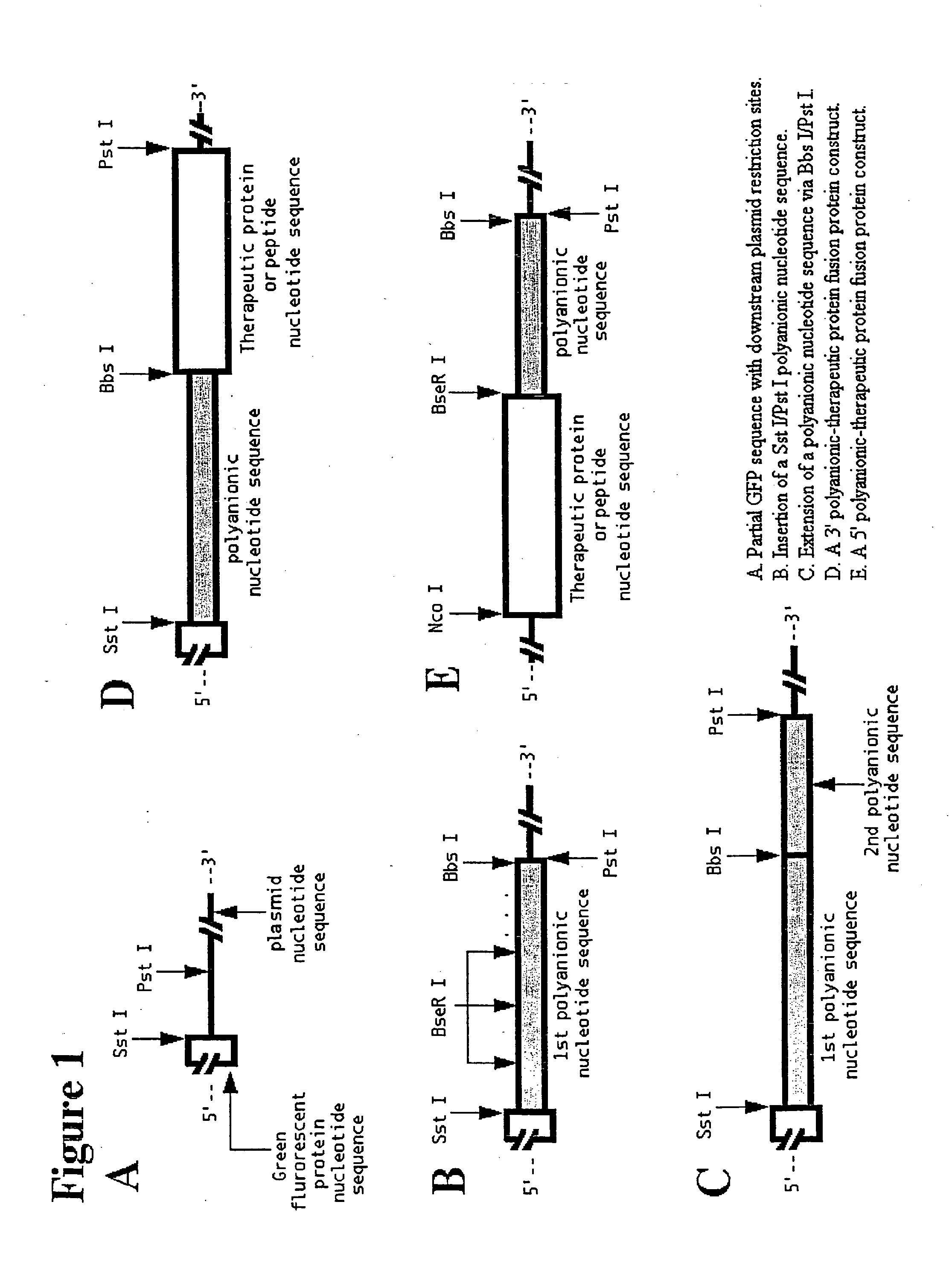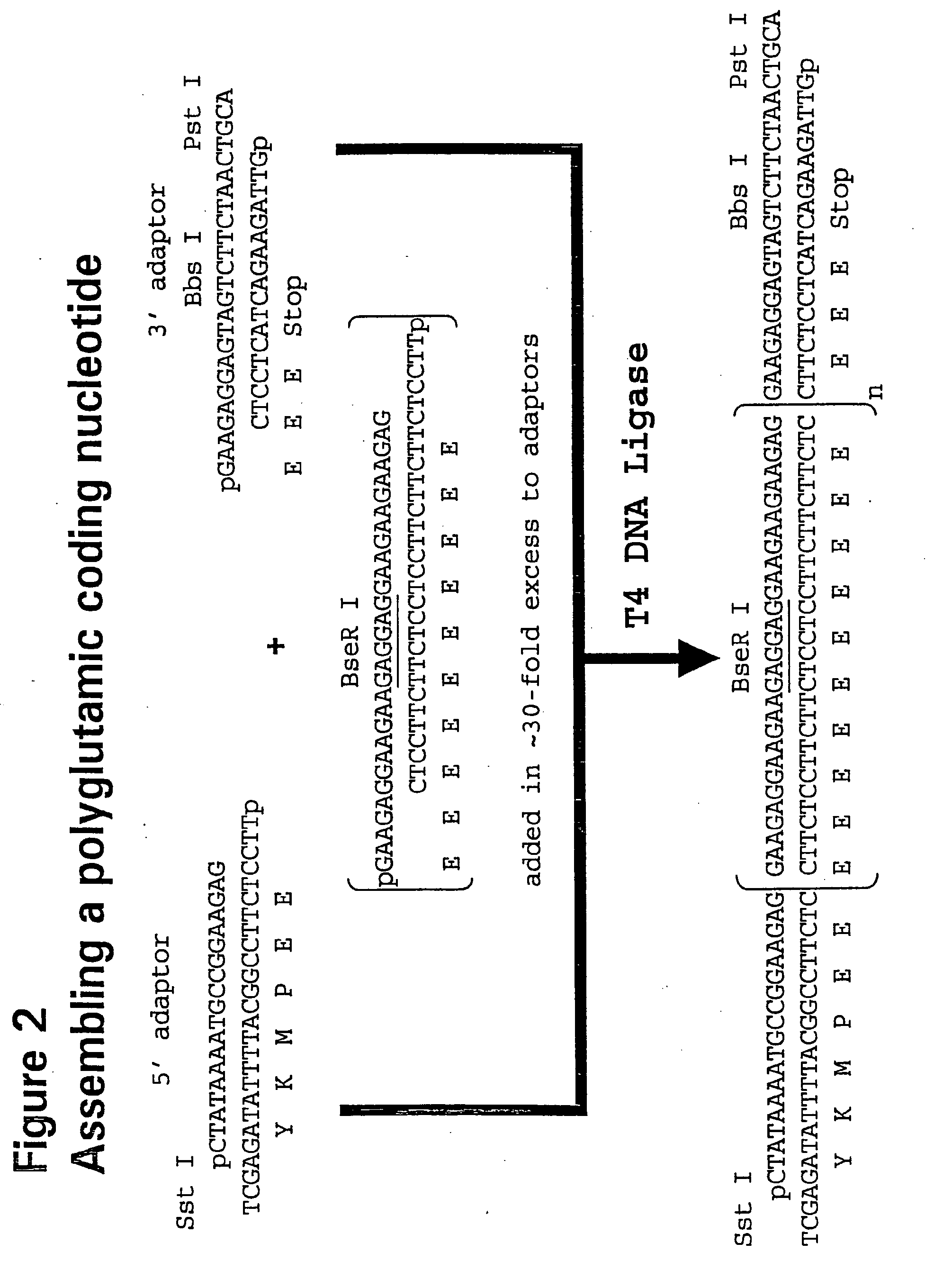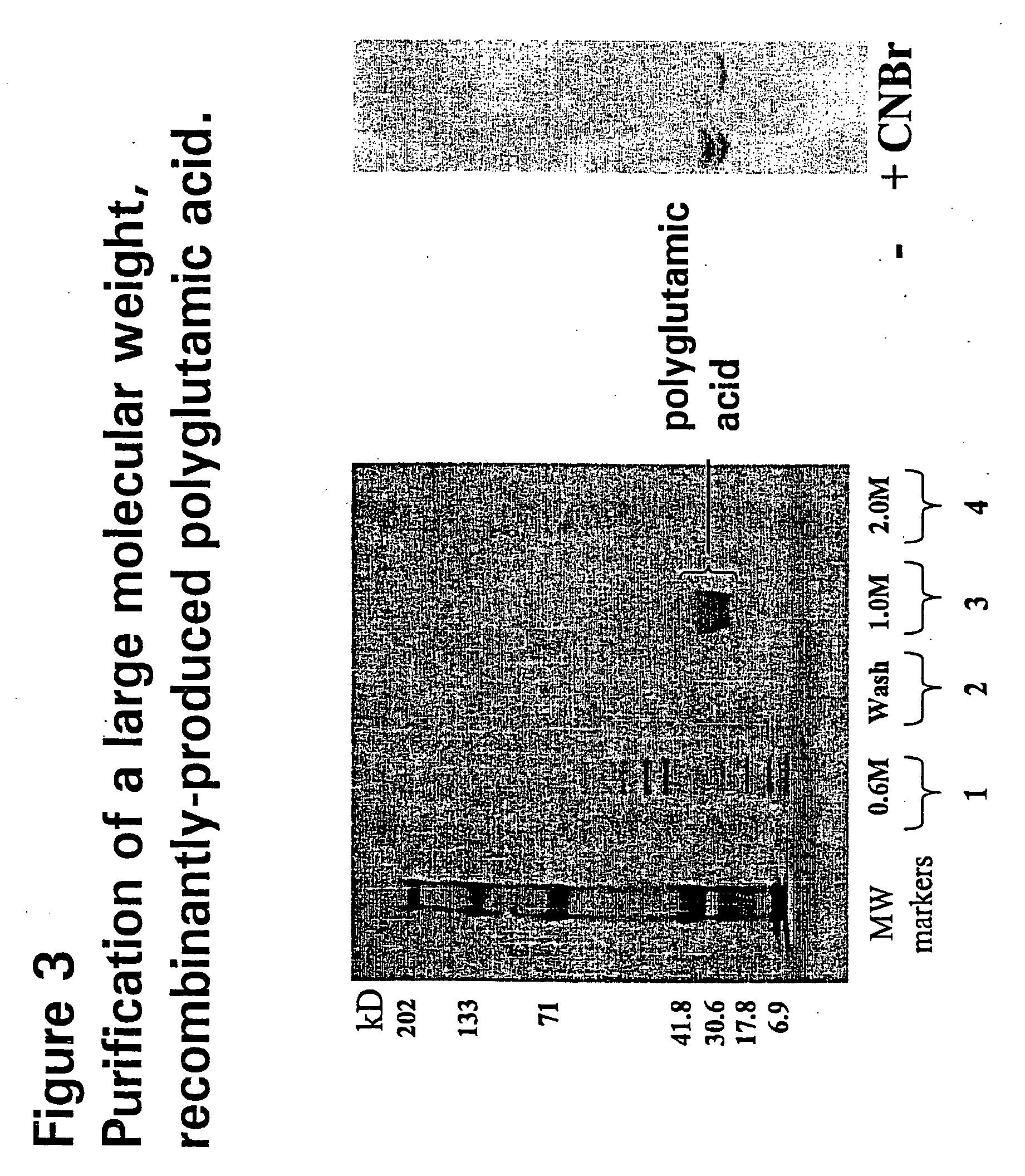Recombinant Production of Polyanionic Polymers, and Uses Thereof
a technology of polyanionic polymers and recombinant production, which is applied in the direction of peptides/protein ingredients, pharmaceutical active ingredients, peptides, etc., can solve the problems of limiting the size and quality of polyanionic polymer preparations, altering the circulatory half-life of drugs, and chemical methods generally cannot produce polyanionic polymers larger than 10 kd
- Summary
- Abstract
- Description
- Claims
- Application Information
AI Technical Summary
Benefits of technology
Problems solved by technology
Method used
Image
Examples
example 1
Recombinant Production of Polyanionic-Encoding Polynucleotides
[0091]Oligonucleotides were ordered from MWG (High Point, N.C.) and dissolved in water at 50 pmole / ml before use. FIG. 2 shows the scheme used to assemble DNA fragments coding for polyglutamic acid.
[0092]Oligonucleotides encoding a polyglutamic acid sequence were added almost to 30-fold molar excess compared to 5′- and 3′-adaptor oligonucleotides that encode subcloning restriction sites. For instance, in addition to encoding at least one stop codon, the 3′-adaptor oligonucleotides also encode at least one asymmetric restriction enzyme recognition site, such as Bbs I, BseR I, or Bsg I (New England Biolab, Beverly, Mass.), with the cleavage sites located upstream of the recognition sites. This design allows the cleavage of the plasmid at the last codon before the stop codon of the polymer construct.
[0093]The oligonucleotide, oPG5F, was designed so that the ratio of glutamate codons, GAA to GAG. See Table 1 for oligonucleo...
example 2
Construction of Expression Plasmids for the Synthesis of Polyanionic Polymers in E. coli
[0097]Insertion of an Sst I-Pst I digested polynucleotide encoding anionic amino acids between the Sst I and Pst I restriction sites of either pKKGFP2 or pBDGFP2 leads to the expression, in E. coli cells, of a fusion protein comprised of a green fluorescent protein (GFP) nucleotide sequence fused to a polyanionic peptide of defined length.
(i) pKKGFP2
[0098]The plasmid pKKGFP2 was derived from the plasmids pGFPuv and pKK388-1 (Clonetech, Palo Alto, Calif.). The GFP coding region from pGFPuv was amplified in the polymerase chain reaction (PCR) to generate a product of approximately 780 bp product using oligonucleotides oGFP-2F and oGFP-2R.
[0099]This 780 bp product was digested with restriction enzymes Acc65 I and Pst I and ligated to Acc65 I and Pst I digested pKK388-1, to generate the plasmid pKKGFPuv. All restriction digests described in the instant invention were performed under conditions accor...
example 3
Expression of Cloned Polyanionic Polynucleotides in E. coli
[0102]DNA restriction mapping analysis showed that of the 200 or so cDNA clones screened, the majority contained Sst I-Pst I inserts of less than 250 bp. A single plasmid was identified with an insert of 560 bp. A silent mutation, confirmed by restriction mapping and sequencing, was found not to change the glutamic coding sequence. The 560 bp clone and another with a 200 bp insert, were chosen for expression analysis.
[0103]The 200 bp clone encodes a polyglutamic acid of 56 glutamate amino acids, corresponding to a molecular weight of approximately 7.3 kD. The 560 bp clone consists of 175 glutamic acid residues and is predicted to have a molecular weight of approximately 23 kD.
[0104]Sst I-Pst I fragments of both the 200 bp and 560 bp clones were cloned into the inducible expression vector pBDGFP2 to generate the plasmids pBDPG4L1 (200 bp clone) and pBD2PG3B (560 bp clone). After transformation of these two plasmids, along wi...
PUM
| Property | Measurement | Unit |
|---|---|---|
| molecular weight | aaaaa | aaaaa |
| volume | aaaaa | aaaaa |
| volume | aaaaa | aaaaa |
Abstract
Description
Claims
Application Information
 Login to View More
Login to View More - R&D
- Intellectual Property
- Life Sciences
- Materials
- Tech Scout
- Unparalleled Data Quality
- Higher Quality Content
- 60% Fewer Hallucinations
Browse by: Latest US Patents, China's latest patents, Technical Efficacy Thesaurus, Application Domain, Technology Topic, Popular Technical Reports.
© 2025 PatSnap. All rights reserved.Legal|Privacy policy|Modern Slavery Act Transparency Statement|Sitemap|About US| Contact US: help@patsnap.com



